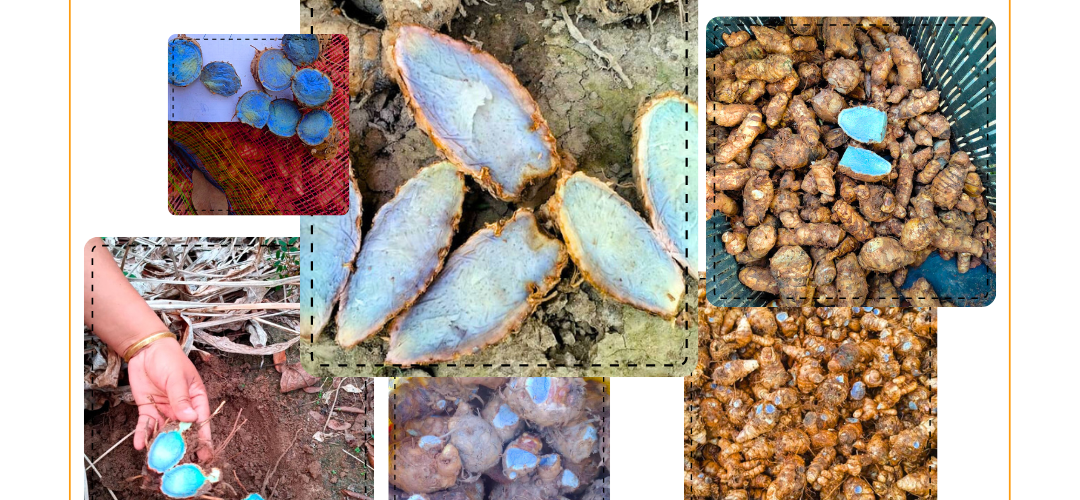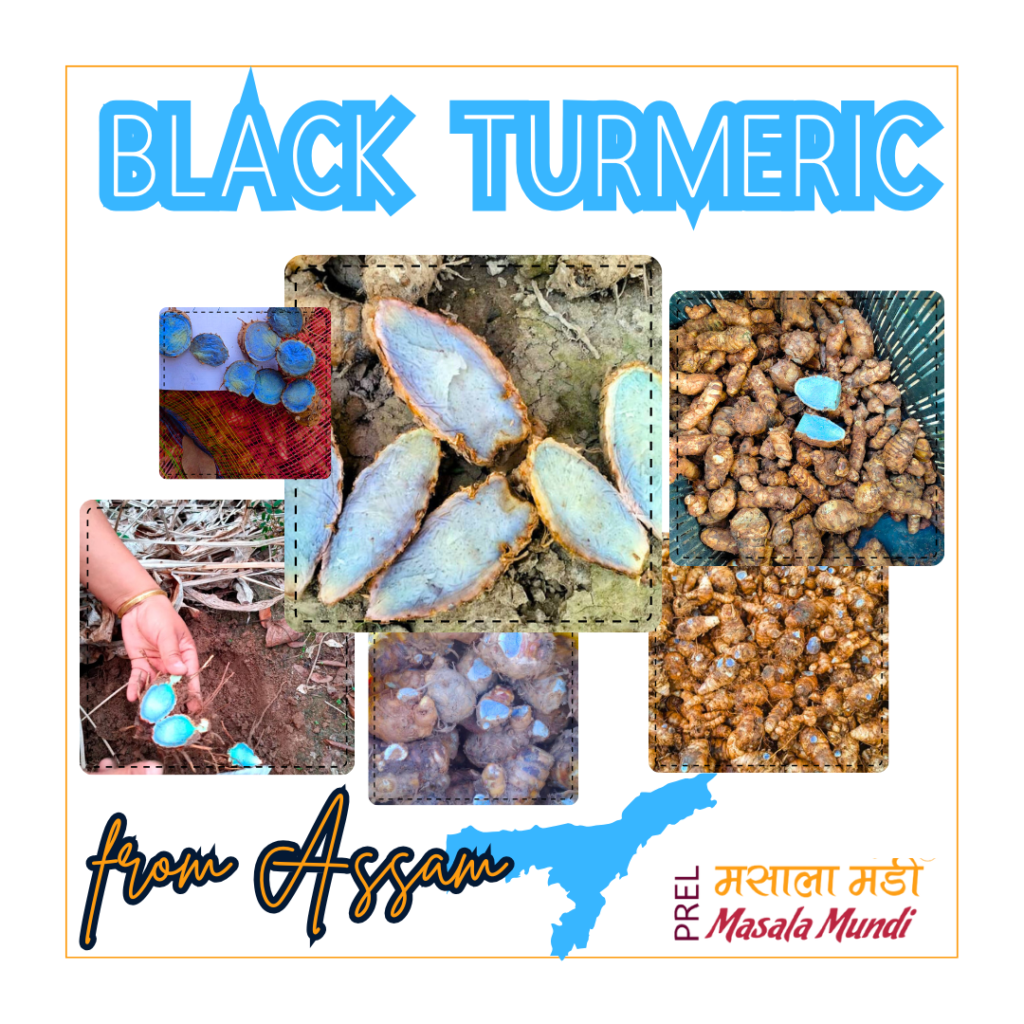No products in the cart.
The Mystique of Black Turmeric: Nature’s Premium Wonder

When it comes to natural superfoods, turmeric often takes center stage, celebrated for its vibrant golden hue and powerful health benefits. However, tucked away in the lesser-known corners of the plant kingdom lies a rare and remarkable gem: black turmeric. Known scientifically as Curcuma caesia, black turmeric is a unique species of the turmeric family, renowned for its distinctive color, potent properties, and exclusive status. Black turmeric (Curcuma caesia) contains a variety of chemical compounds, including:
Essential oil . The volatile oil from the rhizomes of black turmeric contains camphor, ar-turmerone, (Z)-ocimene, ar-curcumene, 1,8-cineole, elemene, borneol, bornyl acetate, and curcumene. Hydrosol. The hydrosol of black turmeric contains camphor, oleic acid, n-hexadecanoic acid, and eicosanoic acid. Other compounds Black turmeric also contains diphenylalkanoids, allylbenzene derivatives, terpenoids, flavonoids, steroids, and alkaloids.
What Makes Black Turmeric Special?
Black turmeric’s allure lies in its rarity and extraordinary qualities. Unlike the commonly used yellow turmeric, black turmeric boasts a striking dark bluish-black rhizome with a sharp, earthy aroma. Its color comes from the high concentration of anthocyanins, the same antioxidants that give berries their rich hues. Curzerenone (18.09%), epicurzerenone (12.47%), eucalyptol (11.57%), camphor (5.94%), and germacrone (4.47%) were the major constituents in the rhizome EO, whereas, the leaf EO was dominated by eucalyptol (12.53%), camphor (7.23%), curzerenone (5.24%), germacrone (4.81%) and curzerene (4.9%).

1. Rarity and Cultivation
Black turmeric is predominantly grown in specific regions of India, such as Odisha, West Bengal, and the northeastern states, where the climate and soil conditions are ideal. It is not widely cultivated, making it an exclusive crop. Traditional farmers often consider it a sacred plant, used in rituals and ceremonies, adding to its mystique.
2. Nutritional Powerhouse
This exotic root is packed with curcuminoids, essential oils, and bioactive compounds that contribute to its exceptional health benefits. Black turmeric is celebrated for its anti-inflammatory, antioxidant, and antimicrobial properties, making it a holistic remedy in traditional medicine systems like Ayurveda and Siddha.
3. Medicinal Benefits
- Pain Relief: Black turmeric is used to alleviate joint pain, arthritis, and muscular discomfort. Its anti-inflammatory compounds provide natural relief.
- Digestive Aid: It supports healthy digestion and helps combat gastric issues.
- Immunity Booster: Rich in antioxidants, black turmeric strengthens the immune system, protecting against infections and diseases.
- Respiratory Health: It is traditionally used to treat respiratory ailments like asthma and bronchitis.
Why Black Turmeric Is Considered Premium?
Limited Availability
Black turmeric’s cultivation requires specific climatic and soil conditions, and its slow growth cycle limits large-scale production. This scarcity significantly increases its value in both local and global markets.
Labor-Intensive Harvesting
Harvesting black turmeric is a meticulous process that involves careful digging and cleaning of the rhizomes to preserve their integrity and potency. This labor-intensive method adds to its exclusivity.
High Demand in Alternative Medicine
The growing interest in natural remedies and holistic wellness has amplified the demand for black turmeric. Its perceived potency and versatility in treating various ailments make it a sought-after ingredient in herbal products and supplements.
Culinary and Cosmetic Applications
While black turmeric is primarily valued for its medicinal properties, it is also gaining attention in the culinary and beauty industries. Its earthy, slightly bitter taste lends itself to unique dishes and health drinks. Additionally, its potent antioxidants are being harnessed in premium skincare products for anti-aging and rejuvenation.
How to Use Black Turmeric
- As a Powder: Dried black turmeric can be ground into a fine powder and added to teas, smoothies, or recipes.
- In Essential Oils: The essential oil extracted from black turmeric is used for massages and aromatherapy.
- Raw Consumption: Small slices of the fresh rhizome can be chewed for medicinal purposes.
A Premium Treasure of Nature
Black turmeric is not just a root; it is a symbol of nature’s exclusivity and brilliance. Its rarity, combined with its myriad health benefits and versatile applications, cements its status as a premium superfood. Whether you are a health enthusiast, a natural remedy advocate, or a curious epicurean, black turmeric offers a fascinating journey into the lesser-explored realms of nature’s bounty.
Embrace the mystique of black turmeric, and experience the wonders of this extraordinary root—a true treasure for both the body and soul.




